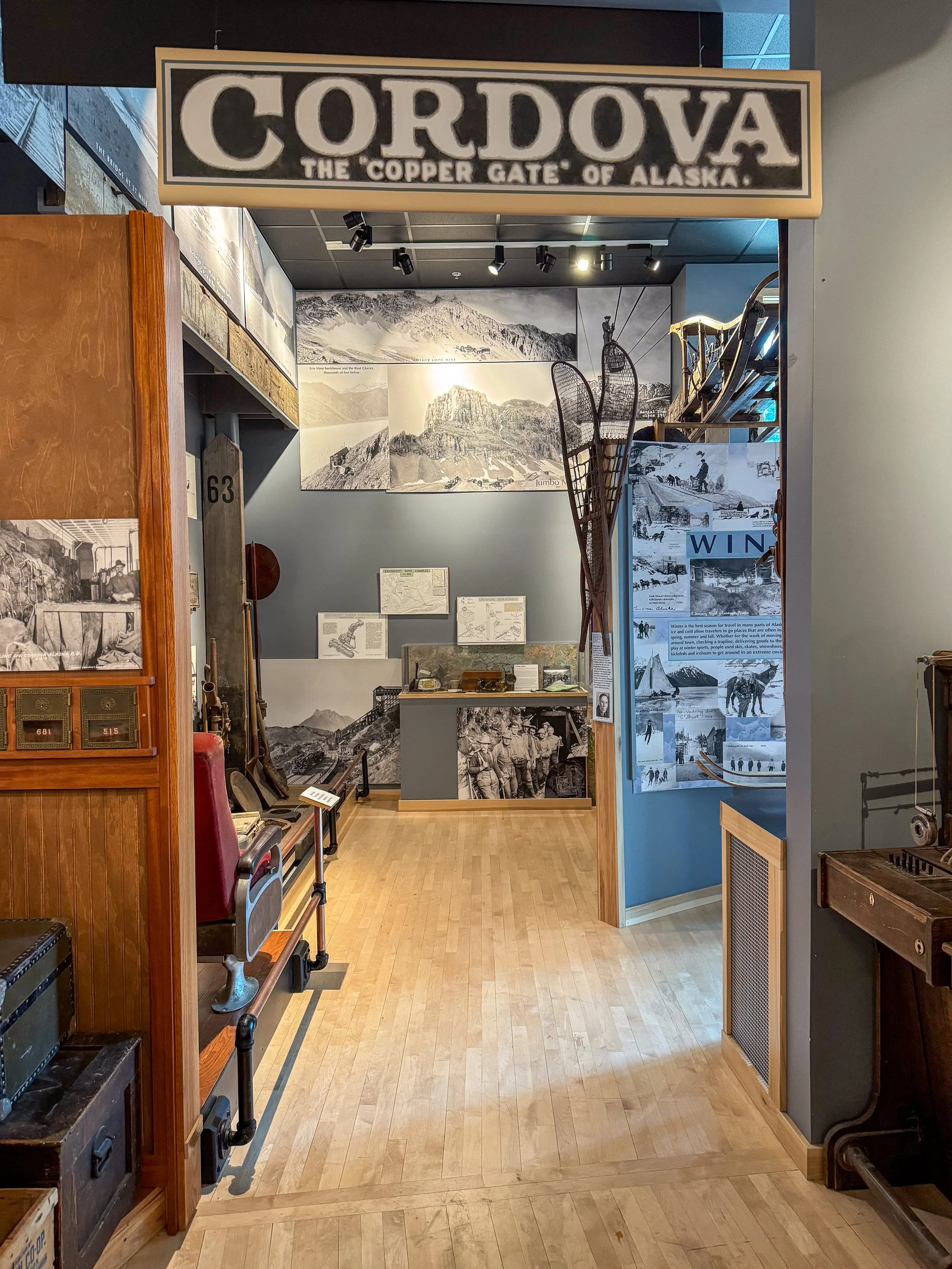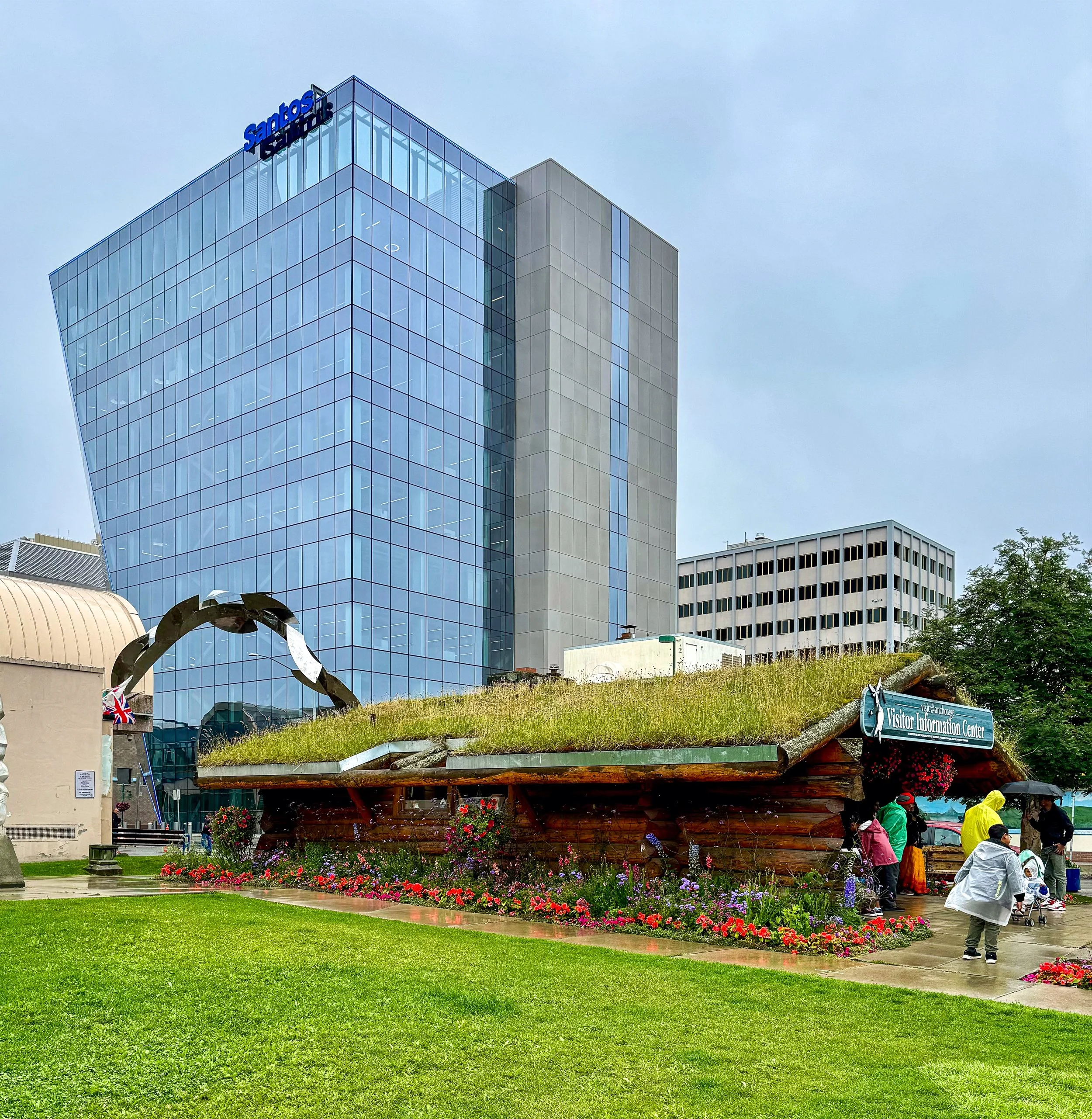Alaska Cordova King Salmon Marathon
Staci and I were exploring marathons nationwide when we discovered a small one in Cordova, Alaska. This marathon, along with several other race distances, is part of the Salmon Festival held every July in Cordova. For this town of 2,600 people, it’s the biggest weekend of the year. Most of the community comes out to volunteer or participate in one of the races.
The Copper River Delta from the air as we landed in Cordova.
Cordova is located on the east side of Prince William Sound, near the mouth of the incredible Copper River. There are no roads connecting the mainland to Cordova; you have to get there by boat or airplane. We flew from Anchorage to the tiny Cordova Airport on Alaska Airlines.
Cordova is primarily a fishing village with a history of copper mining. It has been home to the Eyak people for thousands of years. Downtown Cordova is very small, with only a couple of main streets and very few restaurants or shops. Large cruise ships currently don't stop in Cordova so it feels much quieter than other costal towns.
Downtown Cordova.
Looking out at lake Eyak.
East of Cordova are large mountains and glaciers.
For a small town, Cordova has a large number of beautiful trails.
Because of the long summer days the flowers in Alaska are amazing. We saw huge fields of Cow Parsnip and Lupine.
Devil’s club is common in Forrests in Southeast Alaska. The leaves are huge, often 1-2 feet wide and the entire plant is covered in spines. They produce berries that the bears love to feast on during the summer months.
Rich standing above Sheridan Lake, which is fed by Sheridan Glacier in the distance.
We encountered an Otter while hiking to Sheridan Lake.
Sheridan Glacier.
The start of the marathon was 26 miles from Cordova on the Copper River road. Although there were hundreds of participants in the various races, only 14 of us did the full marathon. This was by far the smallest race we’ve ever run.
The Copper River road was originally a railroad bed. it was a beautiful place to run crossing numerous rivers and following a mountain range to the east.
Rich & Staci near the start of the marathon.
One of the many river crossings.
Looking happy near the start.
Still looking happy, but a little worn out, at the finish.
We visited the Cordova Museum to learn about the town's history. Cordova was named by Spanish explorer Salvador Fidalgo in 1790. Prior to that, the Eyak people had lived there for thousands of years. Like many Alaskan coastal towns, Cordova has a challenging history, including the devastation of its coastal ecosystem caused by the Exxon Valdez oil spill in 1989.
Many of Alaska’s 30,000 Bald Eagles live in the Price William Sound area. This is the closest I’ve ever been to a Bald Eagle. This photo was taken with my iPhone.
Looking out over Nelson Bay toward Hawkins Island.
Looking beyond Cordova and Lake Eyak.
The view from Mt Eyak Ski Area was spectacular. Below is the Orca Adventure Lodge which provides fishing and adventure tours in the Summer and is the base for Points North Heli-skiing in the Winter.
The top of Mt. Eyak Ski area on a spectacular day.
Looking down at Cordova.
We booked the Alaska Ferry from Cordova to Whittier. It took about 6 and a half hours to get to Whittier.
The scenery from the Ferry was spectacular but the weather was bad and we didn’t get to see much.
Arriving in Whittier, you take a tunnel under the railroad tracks to get to our hotel. This was the first of many experiences in Whittier that felt like Eastern Europe in the 1980s.
The town of Whittier was built as an Army base during World War II. The United States was concerned that the Japanese might attack Alaska, so they established Whittier and constructed a single-lane tunnel, the Anton Anderson Memorial Tunnel, to connect it to the Portage Highway and Anchorage. This tunnel, at 2.5 miles long, is the longest highway tunnel in North America and is shared by both cars and trains.
Whittier has a population of about 300, with nearly everyone living in the Begich Towers, pictured above. This 14-story building was completed in 1957 to house military personnel and their families. It is now a private condominium complex where both locals and visitors can stay. The town also has a small harbor, making it a gateway for marine activities in Prince William Sound, such as fishing, kayaking, and wildlife viewing. Despite its small size, Whittier serves as an important port and transportation hub in the region.
The view from our hotel room. Whittier is surrounded by huge mountains and glaciers and gets almost 200 inches of precipitation, making it one of the wettest towns in the world.
Whittier has a large harbor which accommodates hundreds of fishing boats as well as large cruise ships.
One of the most popular hikes in Whittier is the trail to Portage Pass and Glacier.
Looking out at Portage Glacier.
There are many marine tours that start in Whittier.
The Inn at Whittier is the only nice hotel/restaurant in the town. it is currently closed for renovations.
After two days in Whittier we took the Alaska Railway to Anchorage.
The only way out of Whitter is through the Anton Anderson Memorial Tunnel which has has a single lane shared by cars and trails.
A view of Leonard Glacier leaving Whittier.
One of the Amazing things about Alaska is the lush green landscapes with Glaciers.
From Anchorage we drove to the Alaska Wildlife Conservation Center.
Moose are iconic inhabitants of Alaska, representing one of the largest and most majestic members of the deer family. These impressive animals are well adapted to the harsh Alaskan climate, thriving in the state's diverse habitats, from dense forests to open tundra. An adult moose can stand over six feet tall at the shoulder and weigh up to 1,600 pounds, with males distinguished by their broad antlers that can span up to six feet across
Staci flirting with an Alaskan Wood Bison.
Turnagain Arm is a scenic waterway in Alaska, stretching approximately 45 miles from the northwestern tip of the Kenai Peninsula to the southeastern end of Anchorage. Named by the British explorer Captain James Cook in 1778 after being forced to "turn again" due to the impassable nature of the area, Turnagain Arm is renowned for its dramatic tidal fluctuations, which are among the largest in the world, with differences of up to 40 feet between high and low tide.
Alyeska Ski Area, located in Girdwood, Alaska, is a the most popular ski area in Alaska. Nestled in the Chugach Mountains south of Anchorage, Alyeska is a popular Winter and Summer destination.
We ate at 49th State Brewing in Anchorage. It appears to be one of the most popular restaurants in Anchorage and offers a wide selection of hand-crafted beers.
Mount Baldy is a popular mountain hike near Anchorage.
There are more than a dozen types of berries that grow in Alaska including the Elderberry’s pictured above.
Downtown Anchorage Visitor Center.
It is interesting that both Alaska and Hawaii have statues of Captain James Cook. His third voyage, from 1776 to 1779, aimed to discover the Northwest Passage, a potential sea route connecting the Atlantic and Pacific Oceans. During this expedition, Cook became the first European to visit the Hawaiian Islands and then mapped the coastline from California to Alaska. He left Alaska in 1778 to winter in Hawaii, where he was killed in a conflict with the Hawaiians at Kealakekua Bay.
Personal aviation in Alaska is a vital and unique aspect of life, given the state's vast and rugged terrain, limited road infrastructure, and remote communities. Small planes, often referred to as bush planes, are essential for transportation, delivering supplies, medical emergencies, and connecting isolated regions. Many Alaskans hold private pilot licenses, and the state has the highest number of pilots per capita in the United States
























































